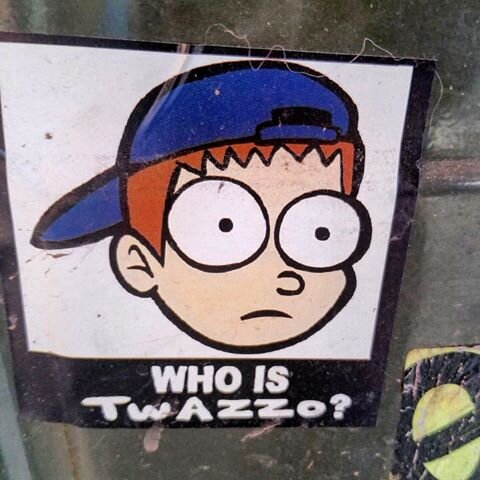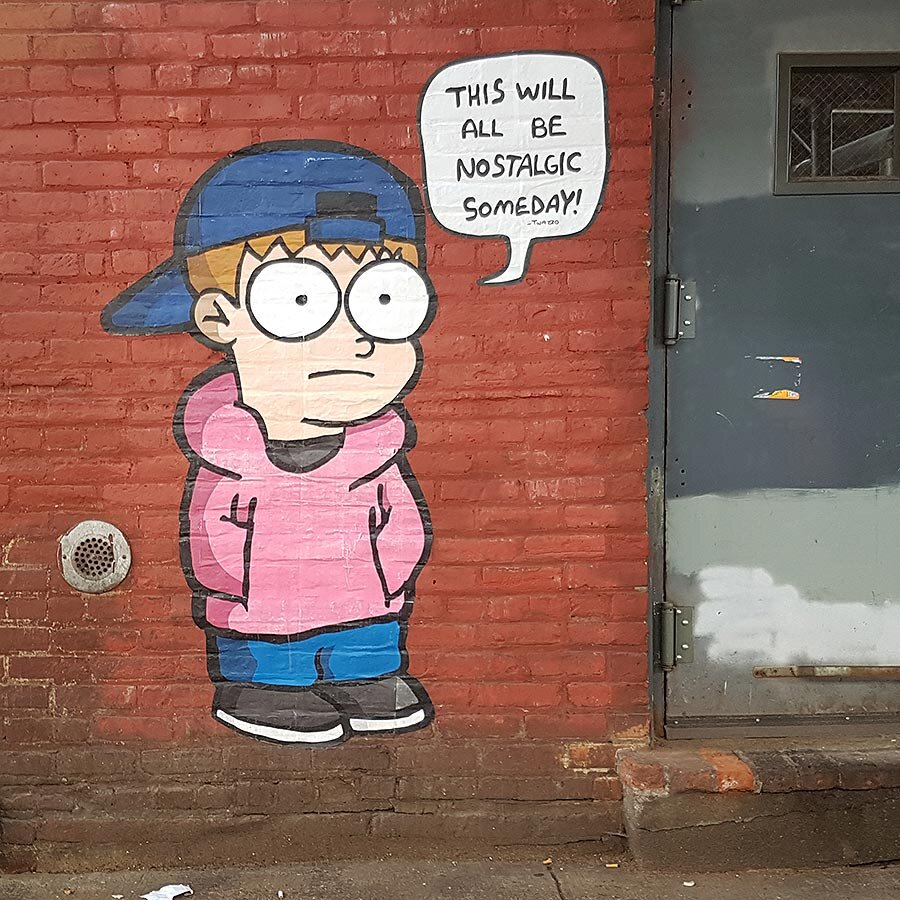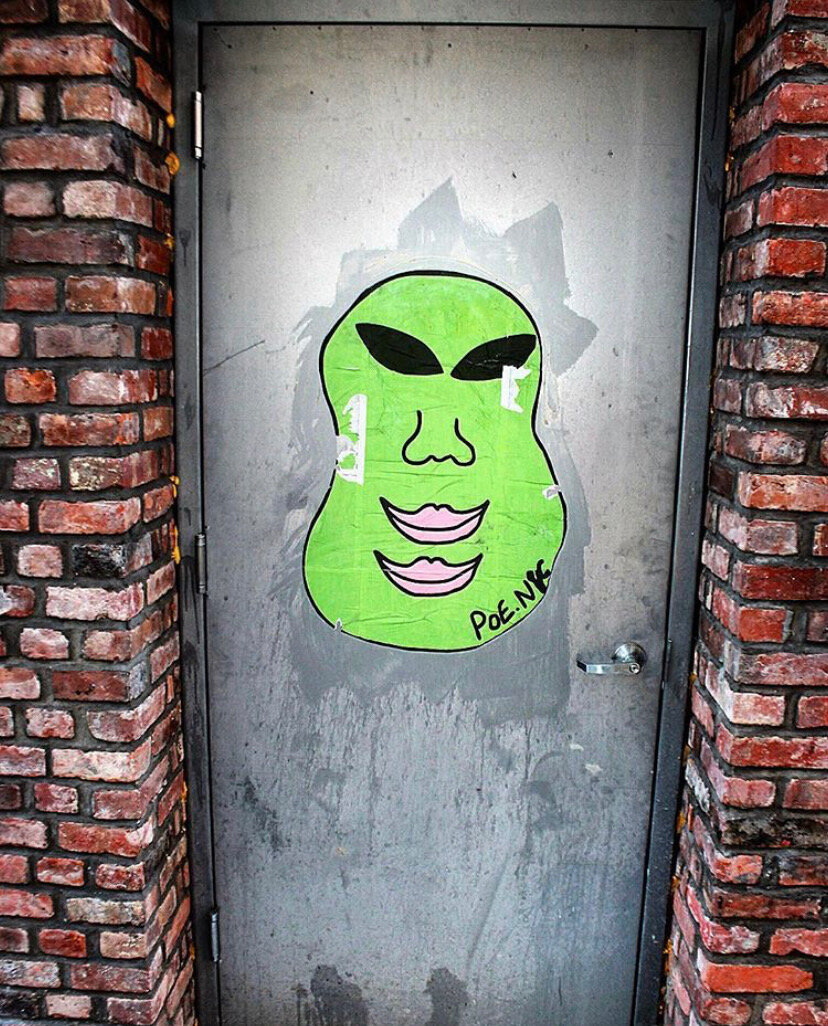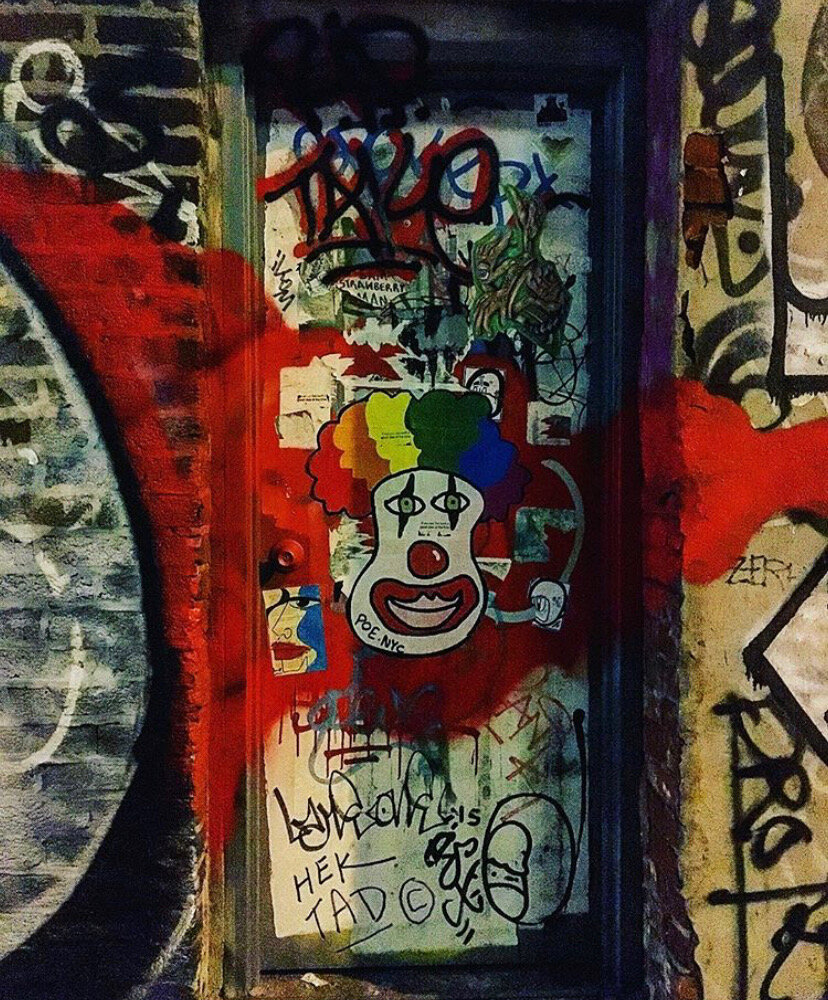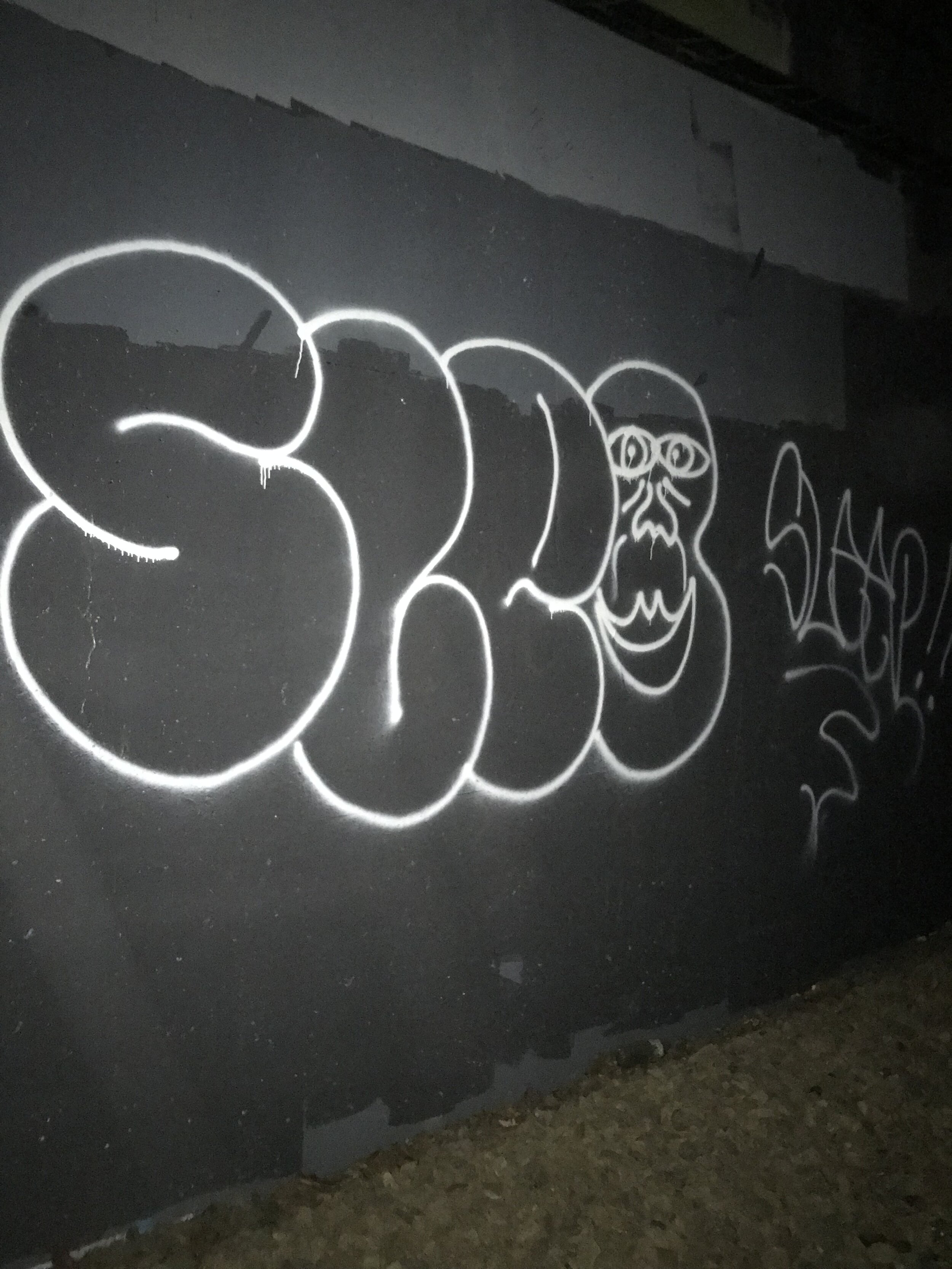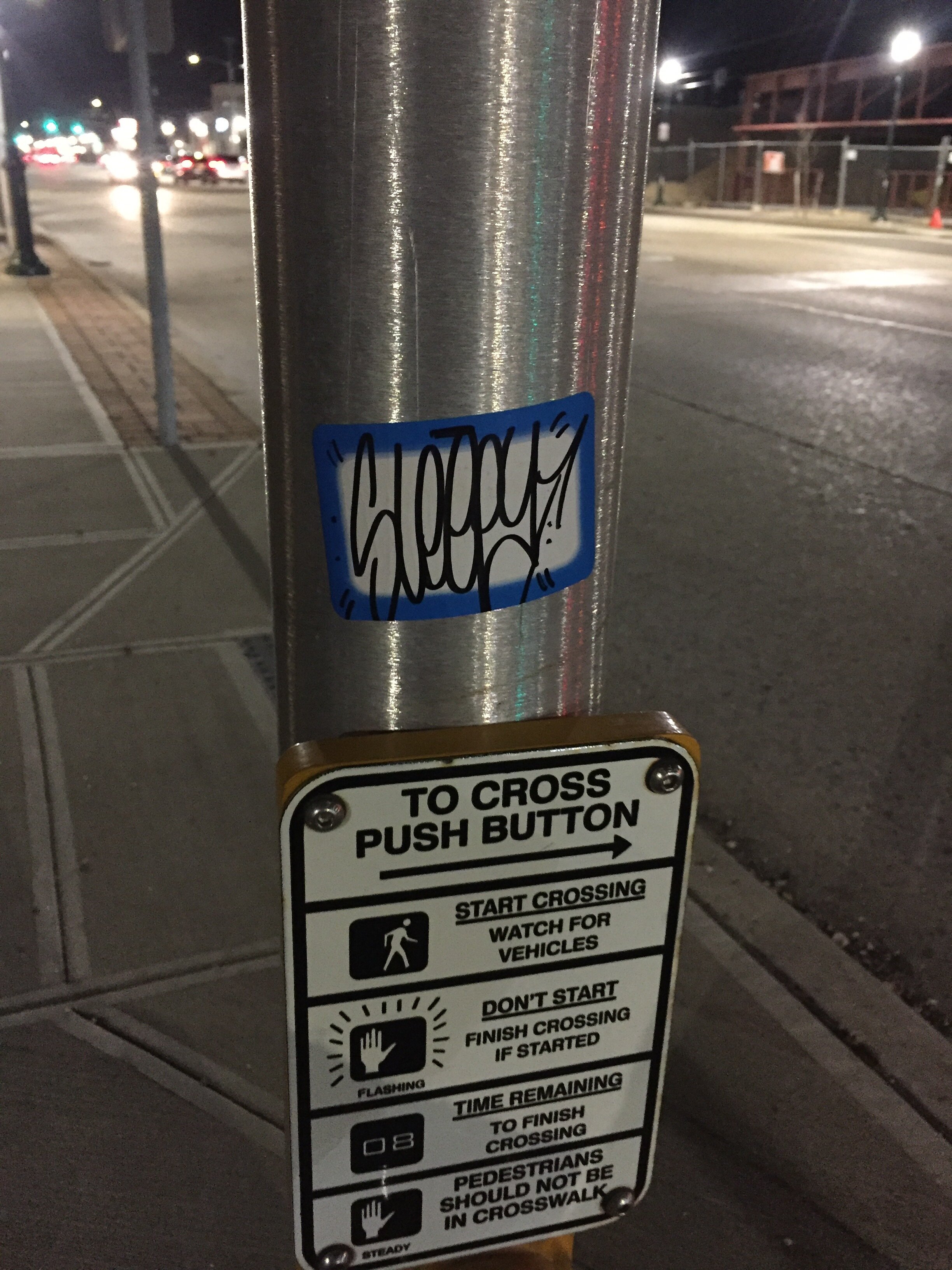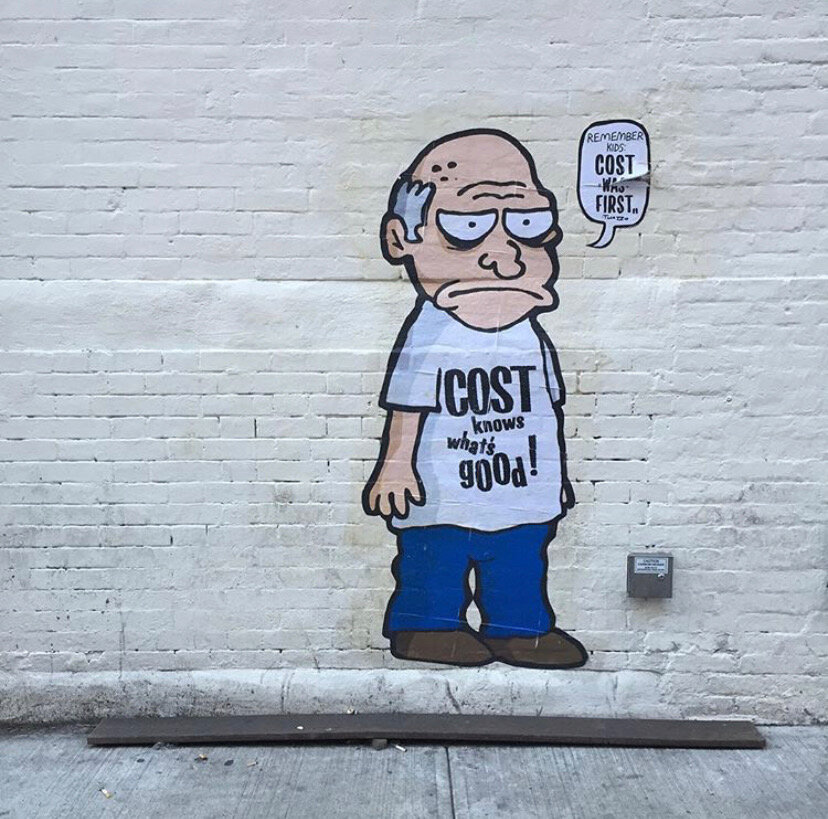Art in Secrecy: NYC's Graffiti and Street Art Community
There’s nothing louder than the silence of the city streets at 1:00 a.m. You grasp the cold metal of the spray can in your sweatshirt pocket, while your hood engulfs you — faceless. As a shadow walking amongst the darkness you spot the perfect brick surface. Not a person in sight. The spray can makes it debut, crawling out from its cozy hiding spot. The metal can lets out a soft whisper, showering the wall in color. The letters form from bubbling lines and you’re gone before the paint dries — but you were here.
In some people’s eyes, graffiti is viewed as vandalism. But for others, it’s art. Graffiti and street art is all around us, on every street we walk down and every subway car we ride — it’s the art you can’t escape. Graffiti has been around since the early days of the cavemen. It later evolved into a defining movement of the ‘80s and ‘90s, one that still embodies New York City today. Behind every tag, sticker, stencil, and wheatpaste is a story, a culture, and a community.
Twazzo stickers covering fire hydrant in NYC
Two young graffiti and street artists, Twazzo and Sleepy, are still new to the graffiti and street art scene, but have quickly become immersed in it. New Yorkers walk past their art every day. However, their unsuspecting faces are unrecognizable, and no one would ever know who these two mysterious kids really are.
Twazzo started his street art journey when he was only twelve years old, spray painting graffiti and Pac-Man ghosts around his hometown for fun. He was fascinated by graffiti and street art, and always wanted to do it himself. The name “Twazzo” was created through a brainstorming session with a friend — the two riffing off of each other with random sounds and phrases until they found the perfect match. Twazzo was always into drawing cartoons and creating characters. One day while sitting in his high school art class, he drew a caricature of his friend, marking the birth of the character Twazzo that launched his sticker art career.
After creating his character, Twazzo made thousands of copies of his drawing and started putting up stickers all over downtown Manhattan. The more stickers he put up, the more recognition he received. When celebrities like Ruby Rose and Paris Hilton started taking pictures of his big eyed, expressive character, people began to ask, “Who is Twazzo?” Sticker art soon became a lifestyle and fun hobby for Twazzo, and something he felt connected to.
“When you’re really into it, it’s like the best feeling ever. It becomes the only thing you look forward to when you’re really in the moment. It’s addicting,” Twazzo said. “It’s almost kinda dangerous, it can take over your life.”
Twazzo’s leap into the street art community inspired his good friend Sleepy to join in on the eccentric art form. Sleepy first started out as a street artist named “Poe”. As Poe, he put up wheatpastes of a character he had drawn when he was a kid. The funny looking character came in many different variations — you never saw the same Poe twice. Sleepy’s street art career as Poe shortly ended, however, due to controversies and bad feelings he got from the community. According to Sleepy, the street art community seemed inauthentic, with some of the artists only doing it for social media attention rather than for the culture. He felt that some of the artists were not doing it for the right reasons, and it became all about followers and likes. There were no real messages being sent through the art or any boundaries being pushed.
“People wouldn’t really use art, they would just like, take a picture of Trump off the internet, paint his eyes, and paste it to a wall and it would get thousands and thousands of likes and they would get so many followers off of it. I just didn’t believe in that,” Sleepy said. “I didn’t consider it art. There was no originality, everything looked the same. Anyone can print out a picture and paste it on a wall.”
Twazzo agreed with this fake feeling that exuded from some of the street artists in the community.
“I feel like if you’re not doing your own thing, then there’s no point to it,” Twazzo said.
This inauthenticity was not what graffiti and street art was originally about, and this led Sleepy to transition over to graffiti. Sleepy abandoned the name Poe because there was already a graffiti artist who he respected using the name. Sleepy admired the risk that came along with doing graffiti. He respected the things graffiti writers had to go through and the dedication they expressed, despite the little to no recognition that came with it.
“I respected a lot of the actual graffiti writers a lot more because they have so much more to lose for such a less gain for something that people only see as like a scribble,” Sleepy said. “Way less people are going to take a picture of that little scribble. That’s their life right there, that’s a felony.”
Sleepy’s struggle with insomnia inspired his name, turning his sleep deprivation into an identity and an outlet. Mental health is a prominent concern within the community, with many graffiti writers and street artists dealing with mental health issues. This has given them a bond and understanding of one another. Along with his insomnia, Sleepy said that he had been dealing with depression and going through a dark time during his prime graffiti days. This led him to a dangerous lifestyle of walking on rooftops and along train tracks.
“You’re not meeting a group of normal people when you meet a group of graffiti artists,” Sleepy said. “When you see a tag there’s a whole story and a troubled human being behind it.”
“You don’t scribble on a wall if you’re mentally healthy,” Twazzo jokes.
The controversy of “selling-out” to galleries has become an ongoing debate within the community, questioning whether graffiti and street artists should commodify their art or simply leave it to the streets. Twazzo and Sleepy try to stay neutral on the topic; even though other graffiti artists may care a lot more and feel more opinionated about it, they try to see both sides equally.
“I like their stuff better on the street. I mean if they’re still doing it on the street while putting stuff in galleries it’s cool, but it kinda depends. If you’re just making it to make money, then I guess you’re a sell-out,” Twazzo said. “It’s not graffiti if it’s not on the street. Everybody gets to see it, a homeless dude can see it. You don’t have to pay for it.”
Being a part of this community has become a huge part of Twazzo and Sleepy’s lives, giving them unforgettable memories to look back on. They have met a lot of people along the way, and even though the majority of the public does not appreciate this art form, the two young artists will always have a deep connection to it.
“It’s a whole underground community that no one really cares about besides other graffiti writers,” Sleepy said. “Normal people, like business men that pass it on the street, don’t really care about it. But, I’m always looking at it. No matter what tag it is I’m going to stop and read it. I’m going to try and see if I can see it again, and if I can keep seeing it then that’s cool.”
Twazzo’s tribute piece to pioneer graffiti artist COST
Twazzo and Sleepy will always appreciate and admire the pioneers in the community that came before them, such as Marky.
Marky made his mark on the New York City graffiti and street art scene in the early ‘90s, covering SOHO and Greenwich Village with his art. Growing up in Brooklyn in the ‘70s and ‘80s, Marky was always fascinated by the graffiti that covered the insides and outsides of train cars. He was highly inspired by Keith Haring’s chalk drawings and other graffiti writers, like Futura 2000, REVS, and COST.
Marky began going on missions with his friends REVS and COST in the early ‘90s around the East and West Village. When first discovering his style, Marky decided that he needed to come up with a character as his trademark. This is when Marky started drawing his famous faces. He would create these large faces by taking flesh colored paint and outlining it with spray paint. The faces consisted of two captivating spiral eyes with a single line that flowed throughout the piece to replicate an eyebrow, nose and mouth. He finished off his mysterious characters by signing his name “Marky” across it. His faces varied depending on his mood — different facial expressions based on how he felt in the moment.
“My styles are always changing,” Marky said. “I use the same face — it’s my trademark. But, I might distort it and change it around a bit. It’s kinda like using a different flavor in a recipe. You want people to know who you are and give them a little sample of what else can be done from now until the future.”
Debbie Harry pictured with one of Marky’s faces circa 1993
By 1995, Marky, REVS, and COST had completely taken over SOHO and other blocks downtown. The group of artists would go out late at night, dressed in all black with backpacks full of spray paint. The group had to stay silent and be very alert, watching out for cops and hiding behind walls whenever they heard the sound of a train barreling through. Staying hidden was their main priority.
“It’s the best feeling. It’s like an adrenaline rush,” Marky said. “When you gotta watch out for the cops, you gotta watch each other’s back. As soon as you have that can in your hand and you start spraying and you’re smelling the paint. It’s just an amazing experience — a little nerve racking.”
Marky is highly recognized within the community who’s respected by big graffiti writers, like Bronx’s BT Crew. He’s able to intertwine his love for exploration with his passion for art by scouting abandoned areas, like psychiatric wards, hospitals, and farms to tag and paint. Marky is still active in the community today — painting his faces along the Metro North train tracks, showing in galleries, and doing live paintings at festivals. Marky has also evolved his style even further by experimenting with different materials, like broken coffee mugs, pieces of steel, and mirrors he finds at flea markets, to create his faces. Marky has the pleasure of having his work hung up in people’s homes, shared on social media, and stickers put up all around the world. Even though fame is hard to find in the graffiti and street art world, the key is to stay consistent.
“To get your name out there you have to keep going on missions and you gotta have your stuff out there,” Marky said.
Marky’s stickers in Sleepy’s sketch book
The aspect of anonymity is crucial to the graffiti and street art community, and the majority of graffiti writers and street artists keep their identity confidential. Unlike his art, Marky prefers to remain faceless. Especially in the town he currently lives in, Marky likes to keep it lowkey, and only goes out on missions outside of his area. He supports other graffiti and street artists by going to their shows and galleries, and bringing his black book to have other writers tag in. Graffiti writers use black sketch books, almost like an autograph book, to meet new writers and tag in each other’s books to get their names out there. This is something that ties the community together. It’s a symbolic feeling of belonging, and taking pride in who you are and this free-spirited lifestyle you live.
“It’s a nonstop thing,” Marky said. “You have to keep going — graffiti is a lifelong investment. Invest your blood, sweat, and tears into it, and what comes out of it: you either get arrested, fame, or you just make people happy with your art.”
Cover art by Mark Reyes @theadventuresofmarkreyes


